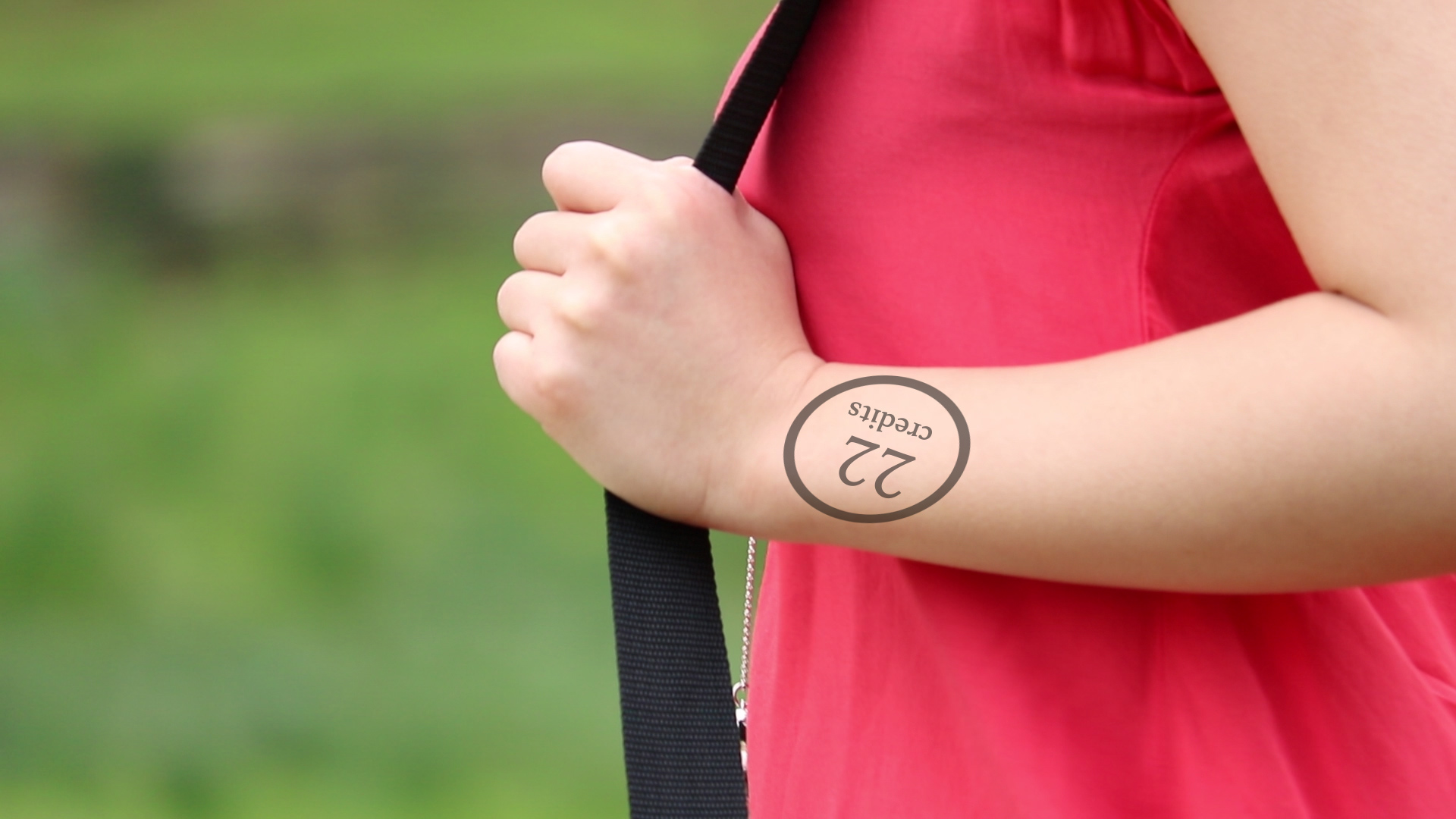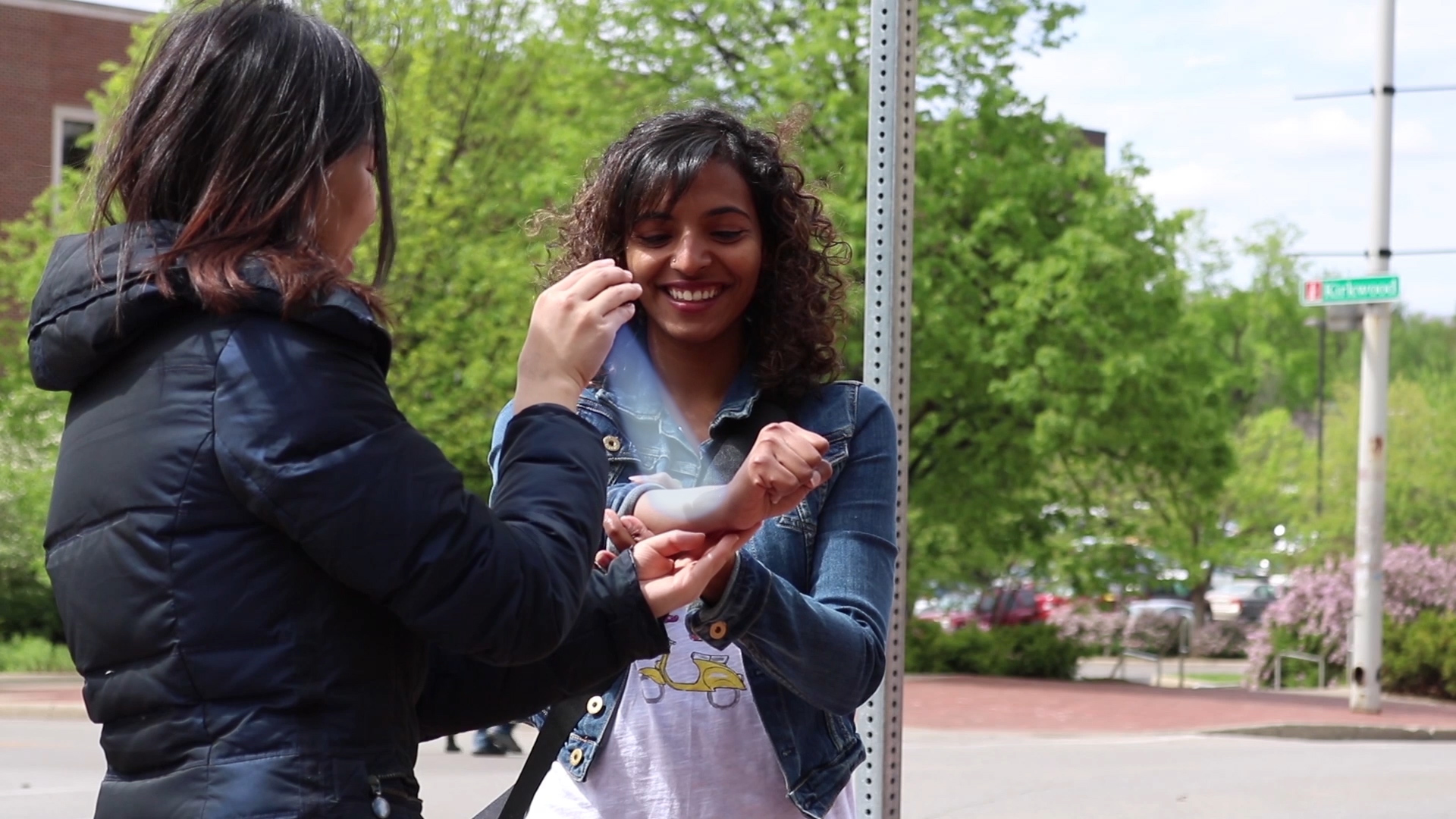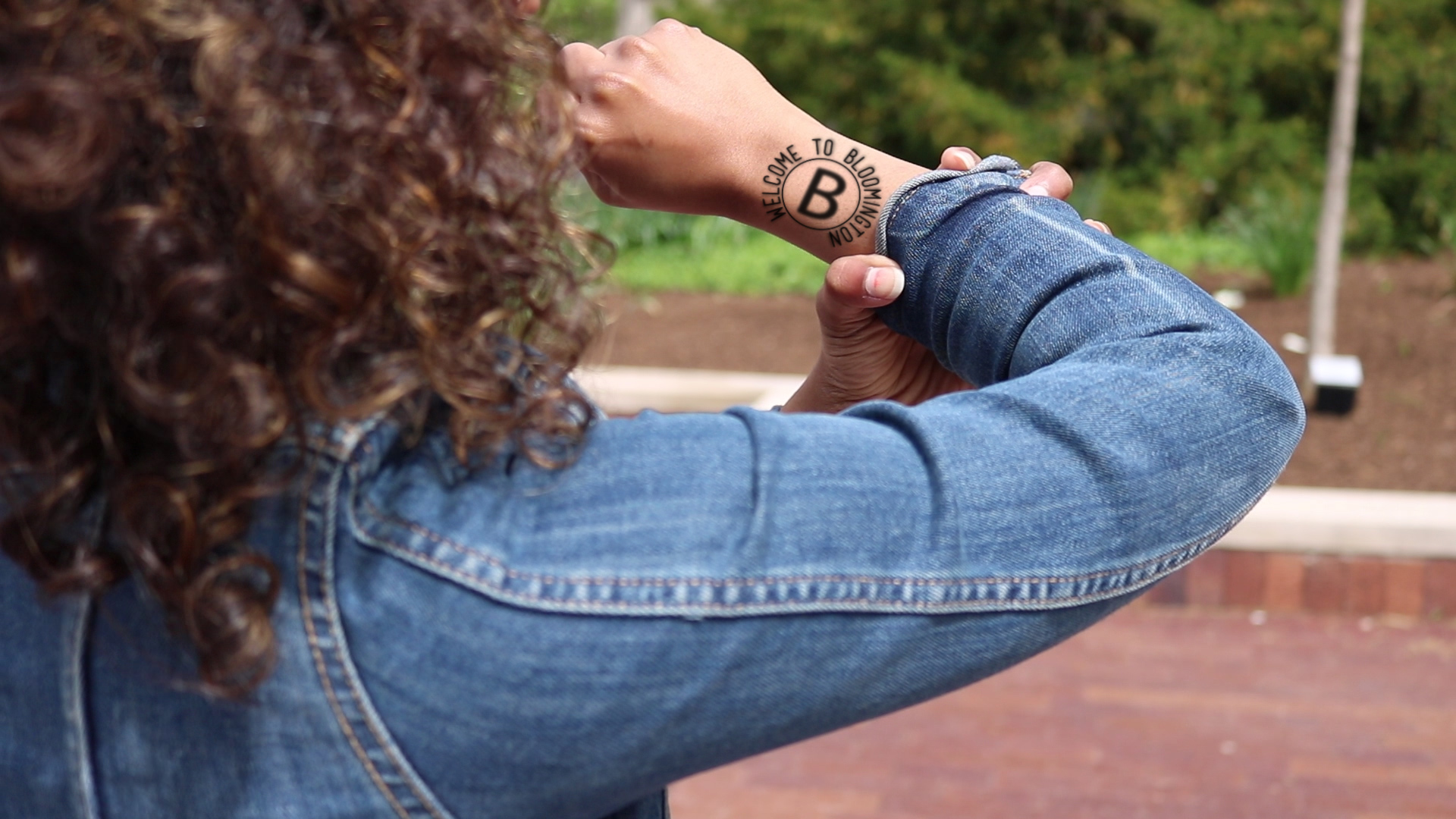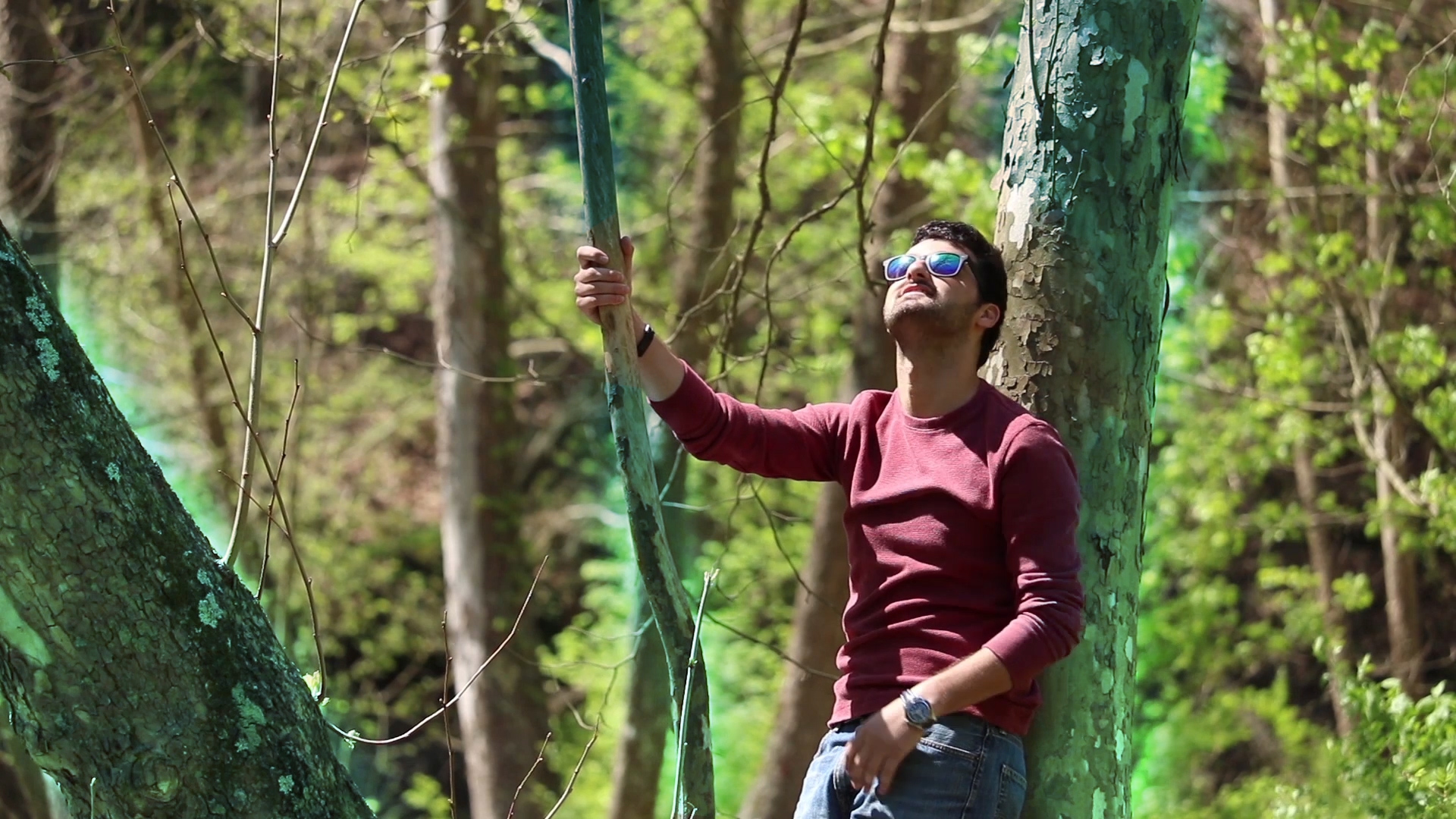Bloomington 2050 Visitor Guide
APRIL 2017 (3 WEEKS)TEAMMATES: Miringu Kiarie, Cyn Liu, Pavithra Ramamurthy
DELIVERABLES: Video
MY ROLE: Acting, Brainstorming & Sketching, Contextual Inquiry, Documentation, Iterations, Video Effect EditingChallenge
Our team was challenged with designing a visitor’s guide to the city of Bloomington in the year 2050 that communicates the vision of the future through design fiction. While thinking about what life will be like in the year 2050, our job was to focus on particular domains such as energy, transportation, space & place, and network & communication and how they express Bloomington as a smart and connected community.
Our Concept
In creating a visitor's guide, our goal was to utilize various methods we learned during this past academic semester. In doing so, we focused on creating a unique experience for people visiting Bloomington in 2050 by using digital technology. Our team decided on two main concepts: Sentient Environment and the Digital Tattoo.
Research & Insights
One method that our team decided to use for conducting research was by performing a contextual inquiry. Before beginning the contextual inquiry, we decided as a team to each focus on one specific domain to further understand. I decided to focus on network & communication where I observed and interacted with an employee at a local FedEx store. During my time at FedEx I was able to observe how employees use different pieces of equipment, interact with customers and learn how packages are distributed to other members of the FedEx team.
Individually each team member generated over fifty Post-It notes relating to the specific domains. As a team we then generated an affinity diagram. We began to notice that seven main categories were forming: Tools, Infrastructure, Rules & Regulations, Individual Behavior, Group Day-To-Day Functions, Opportunities and Personnel.
We concluded that:
Each domain relies on the other domains to accomplish and support the community.
People want to have a connection with nature, but sometimes find it difficult.
There is a division between human networks and nature networks.
Concept Generation
After analyzing our affinity diagram, we individually sketched five concepts based off all four domains. We challenged ourselves by thinking in terms of 'what if...'. Using this mentality allowed our team to generate unorthodox ideas to imagine Bloomington in the year 2050.
After twenty concepts had been generated, our team made connections between reoccurring themes such as nature/environment, autonomy, and tracking information. From there we voted on concepts to iterate on. Based off concept iteration, our team explored tracking information and the unique nature of Bloomington.
Final Design Fiction
After discussing each iteration, we decided to combine parts from a couple different iterations to create two designs: the Digital Tattoo and the Sentient Environment.
The Digital Tattoo is a temporary tattoo within the city limits of Bloomington, which allows a visitor to make purchases, powers transportation, facilitates navigation and establishes a communication network between humans and trees. After arriving in Bloomington, a visitor is able to receive this Digital Tattoo by way of a flashing light. As one creates kinetic energy, the Digital Tattoo will be powered and have the ability to change shapes relaying different pieces of information to the visitor.
The Sentient Environment is an external device coating tree seeds to become a medium for communication between humans and nature. These seed coats collect chemical and electrical signals from the trees that are stored in a virtual cloud and act as a network among trees. Only specific planted trees are coated with this external device and act as a network hub. Visitors now have the ability to talk with trees living in Bloomington.
I Learned...
...how useful it can be to utilize different methods during the design process. At the start of the project we were asked to use contextual inquiry as a main method, but we decided to incorporate 'What If...' cards into our process as well to gain more information into our iteration process. Along with using more than one method, I also learn how to add different effects to a video using Adobe After Effects.








